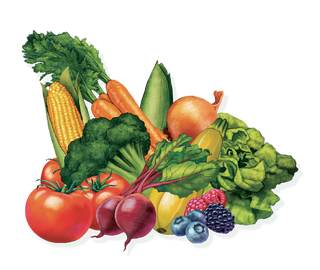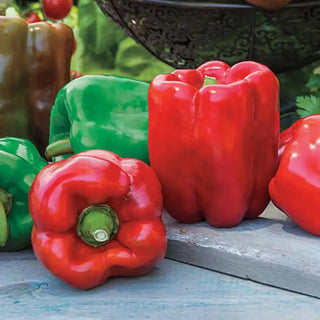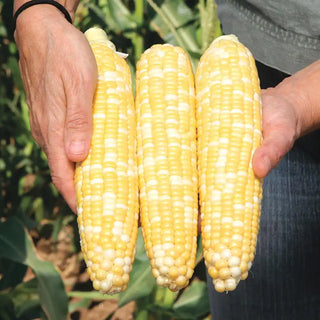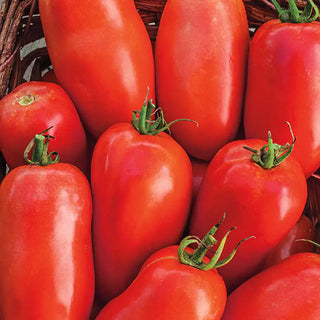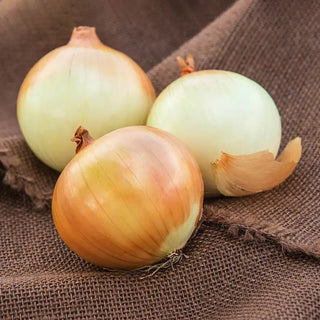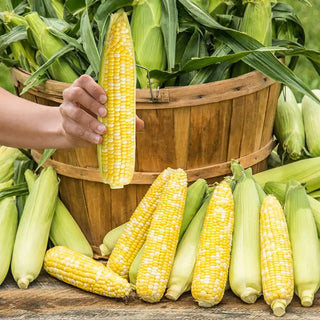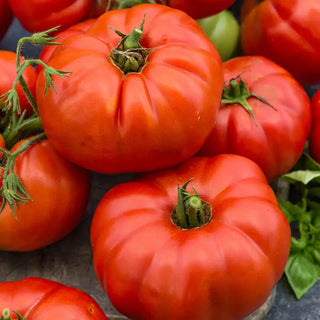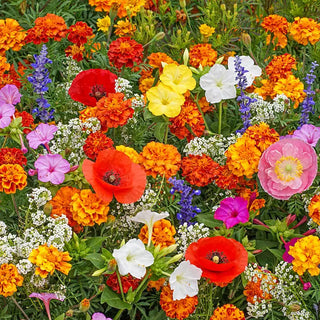Unsure which variety to choose? Consider our customer favorites. Many of these customer favorites—from asparagus to strawberries and blueberries, to tomatoes, squash and corn, have stood the test of time—and are reliable and flavorful.
- Vegetables
- Asparagus
- Annual Vegetable Plants
- Beans
- Bush Bean Seeds
- Pole Bean Seeds
- Beets
- Broccoli
- Brussels Sprouts
- Cabbage
- Carrots
- Cauliflower
- Chard
- Cole Crops
- Corn
- Cucumbers
- Deer Resistant Plants
- Eggplant
- Garlic
- Gourds
- Greens
- Heirloom Vegetables
- Herbs
- Kale
- Kohlrabi
- Lettuce
- Okra
- Onions
- Peas
- Peppers
- Potatoes
- Pumpkins
- Radishes
- Rhubarb
- Root Crops
- Seed Tape
- Spinach
- Sprouts/Microgreens
- Squash
- Tomatoes
- Vegetable Seeds
- Corn
- Yellow
- Bi-Color
- Normal Sugary (su)
- Sugary-Enhanced (se)
- Super-Sweet Hybrids (sh2)
- Synergistic (syn)
- Tomatoes
- Determinate Tomatoes
- Grape Tomatoes - Seeds & Plants
- Heirloom Tomatoes
- Hybrid Tomatoes
- Indeterminate Tomatoes
- Tomato - Open-Pollinated
- Fruits
- Apple Trees
- Apricots, Nectacots and Nectarines
- Berry Plants
- Blackberries
- Blueberries
- Cherry Trees
- Fig Trees and Fig Plants
- Grape Vines & Plants
- Melon
- Native & Unique Fruits
- Peach Trees
- Pear Trees
- Plum Trees
- Raspberry Plants
- Strawberry Plants
- Tropicals & Houseplants
- Blueberries
- Half High Blueberries
- Low Bush Blueberries
- Northern Highbush Blueberries
- Rabbiteye Blueberries
- Southern Highbush Blueberries
- Perennials, Bulbs & Flowers
- Flower Bulbs
- All Perennials
- Clematis
- Daylilies
- Flower Seed
- Deer Resistant Flowers
- Fragrant Flowers
- Wildflowers
- Marigold Seed
- Pollinator Seeds
- Sunflowers
- Zinnia Seed
- Grass Seed
- Groundcovers
- Irises
- Lilies
- Ornamental Grasses
- Peony Plants
- Pollinator Plants and Seeds
- Roses
- Shade Perennials
- Sun Perennials
- Tulips
- Vines & Climbers
- Roses
- Hybrid Roses
- Floribunda Roses
- Climbing Roses
- Ground Cover Roses
- Miniature Roses
- Shrub Roses
- Roses Collections
- Gardens Alive! & Supplies
- Seed Starting Supplies
- Plant Supports
- Beneficial Nematodes
- Composting Aids
- Container Gardening
- Foods & Fertilizers
- Garden Animal Control
- Gardens Alive! Insect Control
- Gardening Aids
- Grow Tubs
- Harvesting & Kitchen Supplies
- Plant Disease Control
- Season Extenders
- Lawn
- Soil Amendments
- Tools & Supplies
We've sent you an email with a link to update your password.
My account
Reset your password
We will send you an email to reset your password.
